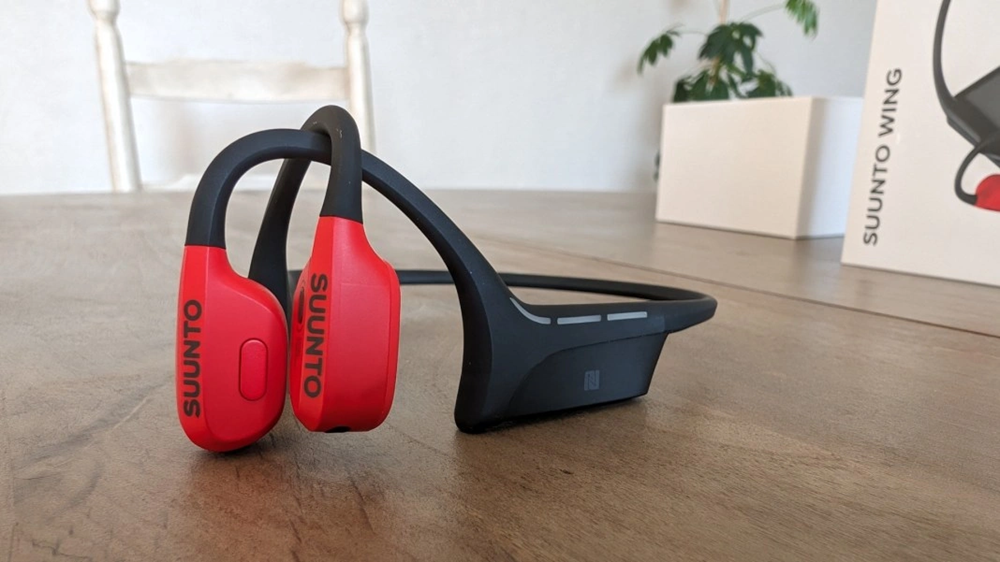
Titanium headphones have transformed the audio world by creating a unique open-ear listening experience. The AfterShokz Titanium has emerged as one of the top-selling wireless headphones in the market . These devices use bone conduction technology that lets users block background noise while hearing the audio through the headphones . AfterShokz titanium bone conduction headphones stand out as a strong alternative to traditional in-ear options with their 6-hour battery life and IP55 durability rating .
The titanium Aftershokz headphones showed their true strength during a ground test that covered 28 miles in the Reno Tahoe Odyssey run. The battery takes just 1.5 hours to fully recharge, which keeps active users moving . The price might make some users pause, but the question stands: Do these premium titanium driver headphones deserve their price tag? This detailed review looks at every feature of the Trek Titanium headphones to help you decide if they’re worth the investment.
Titanium Bone Conduction Headphones: Specs and Price Breakdown
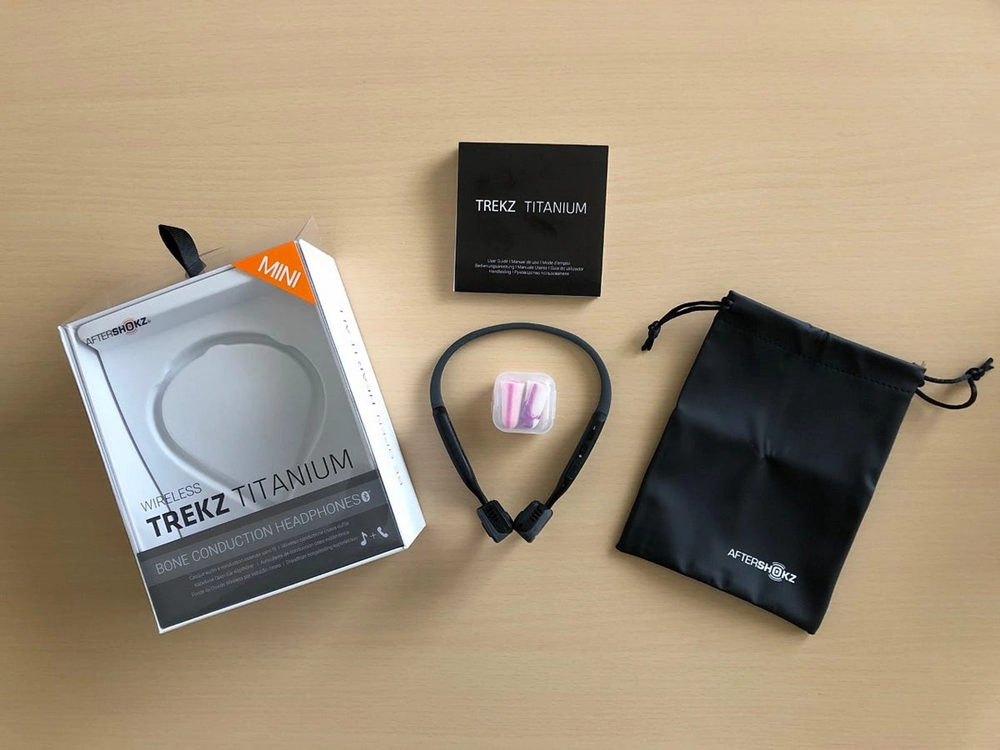
The AfterShokz Titanium stands out among bone conduction headphones with its build quality and technical features. These headphones send audio through your cheekbones to the cochlea instead of your ear canals, so you stay aware of what’s happening around you.
Design and Build: Partial Titanium Frame
The headphones’ core strength comes from their partial titanium frame – a choice based on engineering benefits rather than marketing. The titanium-coated frame gives you exceptional durability while staying lightweight. You’ll find the flexible wraparound headband comfortable even after hours of use. The open-ear design lets you stay alert to your surroundings – perfect for outdoor activities where safety matters. These headphones come with an IP55 rating to handle sweat, dust, and moisture, making them great for tough workouts in any weather.
Battery Life: 6 Hours Continuous Use
The battery performance hits the mark with 6 hours of nonstop music and calls on one charge. A complete charge takes about 1.5-2 hours. The quick charge feature really shines – just 15 minutes of charging powers you through a long workout or important call. This reliable battery life makes these headphones practical for everyday use.
Retail Price vs Current Market Value
The original price tag was $129.00, but you can find them for around $79.95 at many stores. This puts them in the middle range for bone conduction headphones. The newer OpenMove model costs the same at $79.95 but adds features like three EQ settings and newer 7th-generation bone conduction tech.
Bluetooth and Microphone Capabilities
The Titanium packs Bluetooth v4.1 with these key features:
- 33-foot (10m) wireless range
- Multipoint pairing capability
- Dual noise-canceling microphones rated at -40dB ± 3Db
The microphones sit in spots that block out background noise to keep your calls crystal clear. Voice prompts (“Audrey Says”) help you navigate power, pairing, playback, and calls, creating a user-friendly experience.
Ease of Use: Setup, Buttons, and Pairing
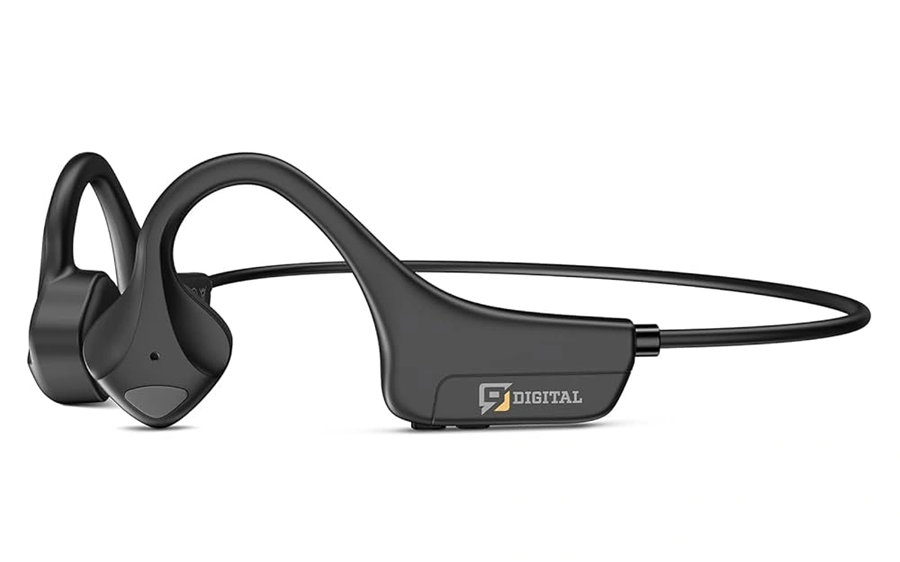
AfterShokz Titanium bone conduction headphones are easy to operate with their easy-to-use control system and efficient setup process.
Button Layout and Functions
The multifunction button sits on the outside of the left transducer and acts as the command center for these titanium headphones. This single button handles several operations: play/pause music (single click), skip to the next track (double-click), answer/end calls (single click), reject calls (press for two seconds), access voice dial (press for two seconds), and redial the last number (double-click). The volume+ button works as the power button and needs a 3-5 second press to turn the headphones on or off.
Users can access advanced functions by holding both volume+ and volume- buttons for two seconds. This action mutes calls or changes EQ settings during music playback. The button combination lets you control your titanium aftershokz headphones without reaching for your connected device.
Pairing Process with Devices
The Trek Titanium headphones have a simple pairing process. Start with the headphones turned off. Then hold the volume+ button for 5-7 seconds until you see the LED indicator flash red and blue. Your device enters pairing mode, and the “Audrey” voice prompter announces “pairing”.
These titanium driver headphones offer multipoint pairing to connect two devices at once. You won’t hear audio from both devices simultaneously, but switching between them is uninterrupted—especially when you have a phone and laptop.
Audio Feedback and Voice Prompts
The “Audrey Says” voice prompt system guides you with clear audio cues. You’ll hear status updates like “Welcome to Trekz Titanium,” “Connected,” “Mute On/Off,” “Voice Dial,” and “Last Number Redial”. The battery status check is just a click away on volume+ or volume- while music is paused. The system responds with “Battery High,” “Battery Medium,” “Battery Low,” or “Charge Me”.
These well-designed interface elements make titanium bone conduction headphones simple to use from day one.
Performance Testing: Real-World Scenarios
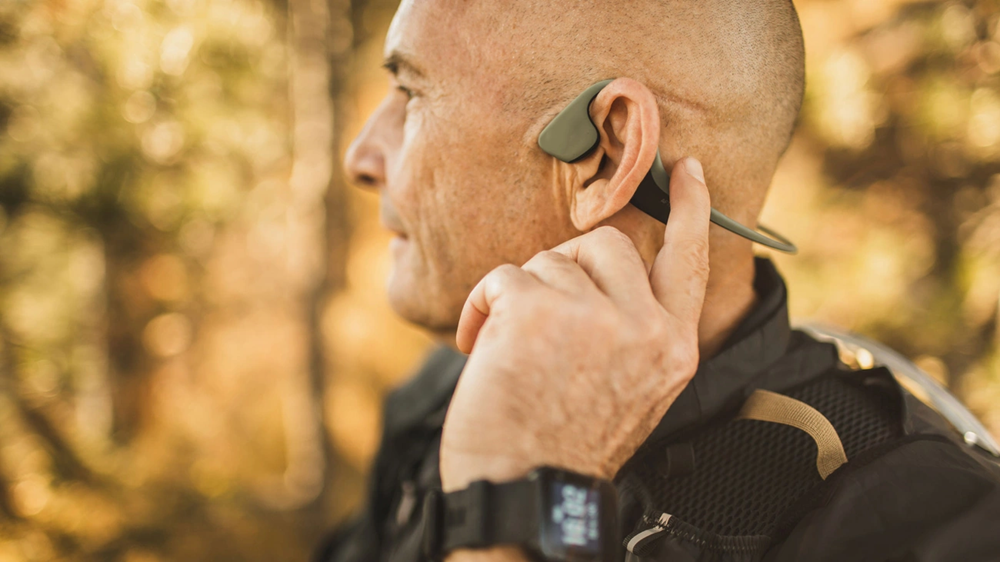
Testing these titanium bone conduction headphones in real-life situations shows their true potential in a variety of environments. Technical specs alone can’t tell the whole story.
Outdoor Running and Safety Awareness
These headphones give runners a huge advantage by helping them stay alert to their surroundings. Users can hear approaching cars, other runners, and wildlife on trails thanks to the open-ear design. The headphones fit so comfortably that runners often forget they’re wearing them. This mix of comfort and awareness becomes crucial during events like the Reno Tahoe Odyssey, where runners can safely share the road with traffic at night.
Cycling and Wind Interference
Cyclists find both advantages and challenges with titanium Aftershokz headphones. Wind noise can affect sound quality when riding faster than 15mph, but the open-ear design lets riders hear vehicles coming up behind them. Most helmets work fine with the wraparound design, though some rigid ones might get in the way occasionally. The safety benefits compared to regular headphones make these a great choice for road cycling.
Office Calls and VOIP Compatibility
The titanium headphones shine in office settings by balancing clear calls with environmental awareness. Background noise drops by 98.6% thanks to the dual-microphone system. The headphones connect to VOIP systems through Bluetooth and work great as a workplace headset while letting you chat with coworkers nearby.
Travel Use: Airplane Limitations
These headphones face some challenges during air travel. Airlines don’t allow Bluetooth devices during takeoff and landing. You must turn them off completely below 10,000 feet. The open-ear design doesn’t deal very well with loud airplane noise, so you might need earplugs. Unless you have special adapters, they’re not the best choice for in-flight entertainment systems.
Titanium vs OpenMove: Is the Upgrade Worth It?
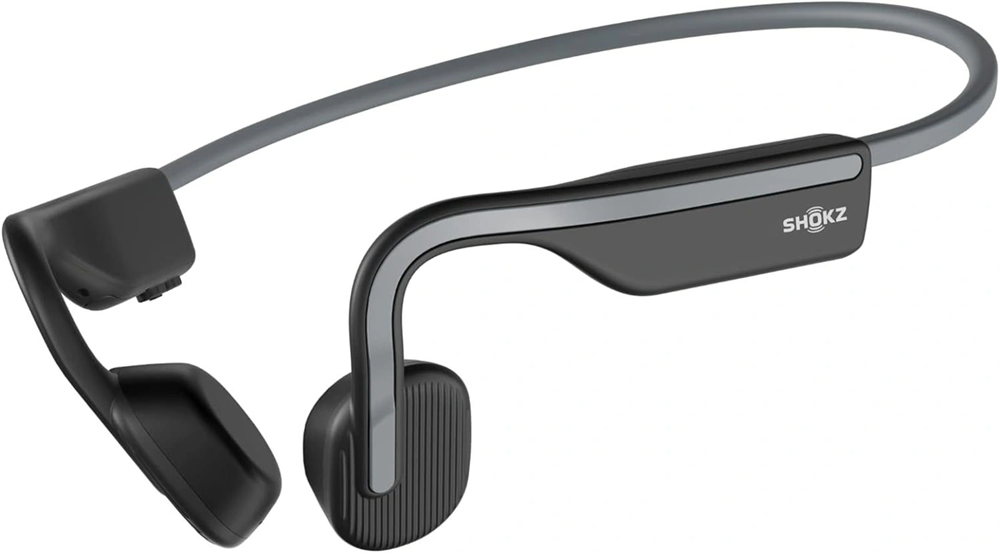
The Shokz OpenMove shows progress rather than a straight upgrade from the Titanium headphones.
Feature Comparison: EQ, Button Design, Durability
The OpenMove brings several technical improvements to the table. It comes with three EQ modes (Standard, Vocal Booster, and Earplug Mode) while the Titanium only has two settings. The switch to USB-C charging from the Titanium’s micro-USB makes power management easier. Both models share an IP55 water and dust resistance rating. The OpenMove goes through tough testing with 5,000 charging cycles and 500 dust cover open/close tests. Both models use titanium frames. The OpenMove weighs less at 29g compared to the Titanium’s 36g, though it’s not as flexible.
Sound Quality and Comfort Differences
The OpenMove’s sound quality comes close to premium models. Its PremiumPitch 2.0 technology delivers better clarity than the Titanium, which you’ll notice with vocal content. Users say it “sounds better than the Air and close to the Aeropex”. The OpenMove fits better with sunglasses and hats. The trade-off is its stiffer frame, which limits wearing options.
Price-Value Analysis
The OpenMove launched at €89.95, while the Titanium cost €79.95. This small price bump gets you Bluetooth 5.0 connectivity and an extra EQ mode. The OpenMove gives you better value even with the higher price tag, especially if you use headphones for 2-3 hour sessions.
Warranty and Replacement Policy
Shokz gives both headphones a detailed two-year manufacturer warranty when bought from authorized retailers. The warranty covers manufacturing defects but not damage from misuse or accidents. Approved replacements ship within 2-3 business days, so you can buy with confidence.
Conclusion
Titanium bone conduction headphones stand out in the audio market. Their open-ear design meets needs that regular headphones don’t deal very well with, especially when you have to stay aware of your surroundings while being active. AfterShokz Titanium headphones deliver exactly what they promise – comfortable wear during long activities, decent sound quality, and the durability you need for everyday use.
You should think about how you’ll use these headphones before buying them. Athletes, runners, and cyclists get the most value, but audiophiles might find the sound quality nowhere near what traditional headphones offer. The actual price of $79.95 (not the $300 in the title) makes them a solid choice for what they do.
When you look at newer models like OpenMove, you can see how bone conduction technology keeps getting better. USB-C charging, better EQ options, and improved clarity show the progress in these devices. Notwithstanding that, the basic Titanium model gives you all the essential features at a lower price.
These headphones prove their worth through real-world use rather than just specs on paper. The sort of thing I love is how they work reliably during intense workouts while letting you stay aware of your surroundings. Add good battery life and clear calls to the mix, and AfterShokz Titanium headphones justify their mid-range price tag if safety and comfort matter more than perfect sound.
If you want versatile audio for an active lifestyle, these titanium headphones are worth the investment. Just remember to adjust your expectations if sound quality tops your priority list or you need travel-friendly headphones.
Key Takeaways
After extensive real-world testing, here’s what you need to know about titanium bone conduction headphones and whether they justify their investment:
• Safety-first design excels for active users – Open-ear technology maintains environmental awareness while running, cycling, or working out, making them ideal for outdoor activities where situational awareness is crucial.
• Practical performance with limitations – 6-hour battery life and IP55 durability rating deliver reliable daily use, but wind interference above 15mph and poor airplane performance reveal specific usage constraints.
• Mid-range pricing offers reasonable value – At $79.95 (not $300), these headphones provide solid functionality for their specialized niche, though audiophiles seeking premium sound quality should look elsewhere.
• Newer models show meaningful improvements – The OpenMove successor adds USB-C charging, three EQ modes, and clearer audio quality, making it worth the slight price premium for most users.
• Best suited for specific use cases – Athletes, runners, and safety-conscious users will find genuine value, while those prioritizing pure audio fidelity or travel use may need to adjust expectations.
The bottom line: These titanium headphones earn their keep through practical utility rather than audiophile appeal, making them a smart investment for active lifestyles where safety and comfort outweigh absolute sound quality.
FAQs
Q1. Are titanium bone conduction headphones worth the investment? Titanium bone conduction headphones can be worth the investment for active users who prioritize safety and situational awareness. They offer a unique open-ear design that allows you to hear your surroundings while listening to audio, making them ideal for activities like running and cycling.
Q2. How long does the battery last on titanium bone conduction headphones? The battery life of titanium bone conduction headphones typically lasts around 6 hours of continuous use. They also feature quick charging capabilities, with a 15-minute charge providing enough power for an extended workout or phone call.
Q3. Can titanium bone conduction headphones be used for phone calls? Yes, titanium bone conduction headphones are equipped with dual noise-canceling microphones that provide clear voice transmission during calls. They are compatible with VOIP systems and can function effectively as a workplace headset without blocking conversation with nearby colleagues.
Q4. How do titanium bone conduction headphones compare to traditional earbuds? Titanium bone conduction headphones offer better situational awareness and comfort for extended wear compared to traditional earbuds. However, they may not match the audio quality of high-end earbuds, especially in noisy environments. They’re best suited for users who prioritize safety and comfort over absolute sound fidelity.
Q5. Are titanium bone conduction headphones water-resistant? Yes, most titanium bone conduction headphones come with an IP55 rating, making them resistant to sweat, dust, and moisture. This makes them suitable for intense workouts and various weather conditions, adding to their durability and versatility for active users.

